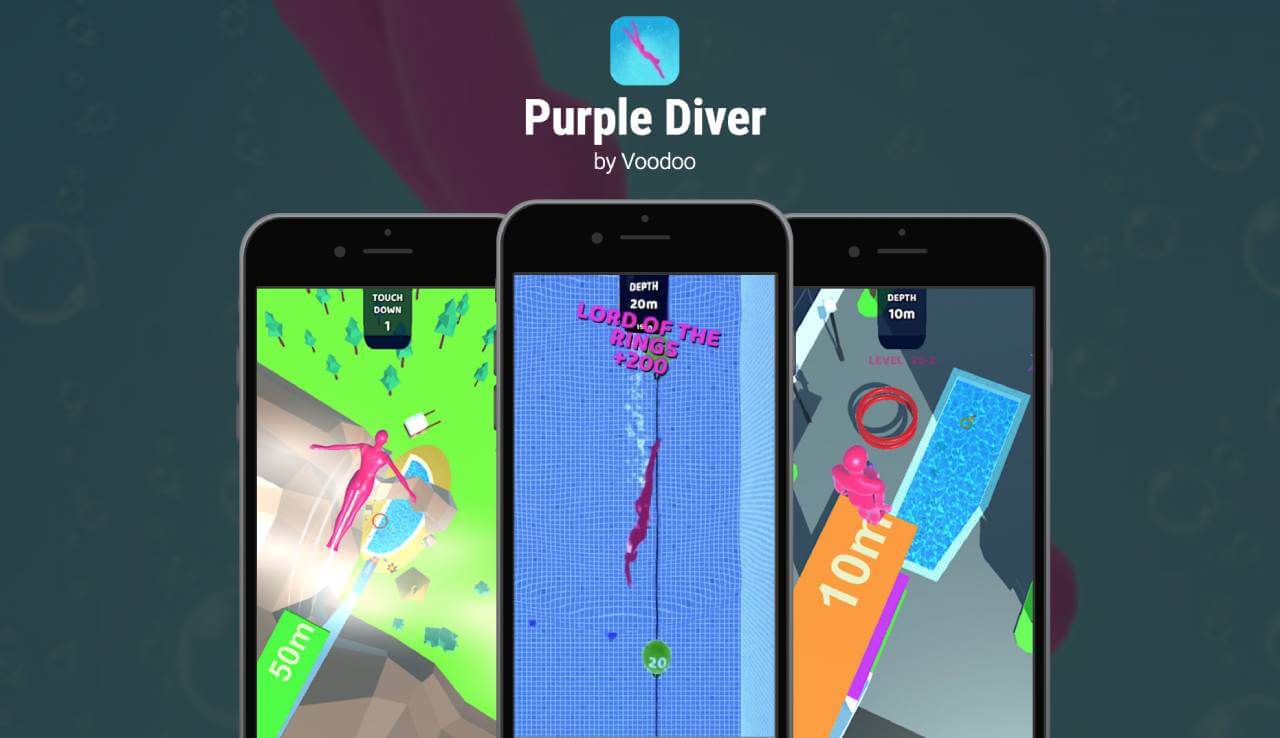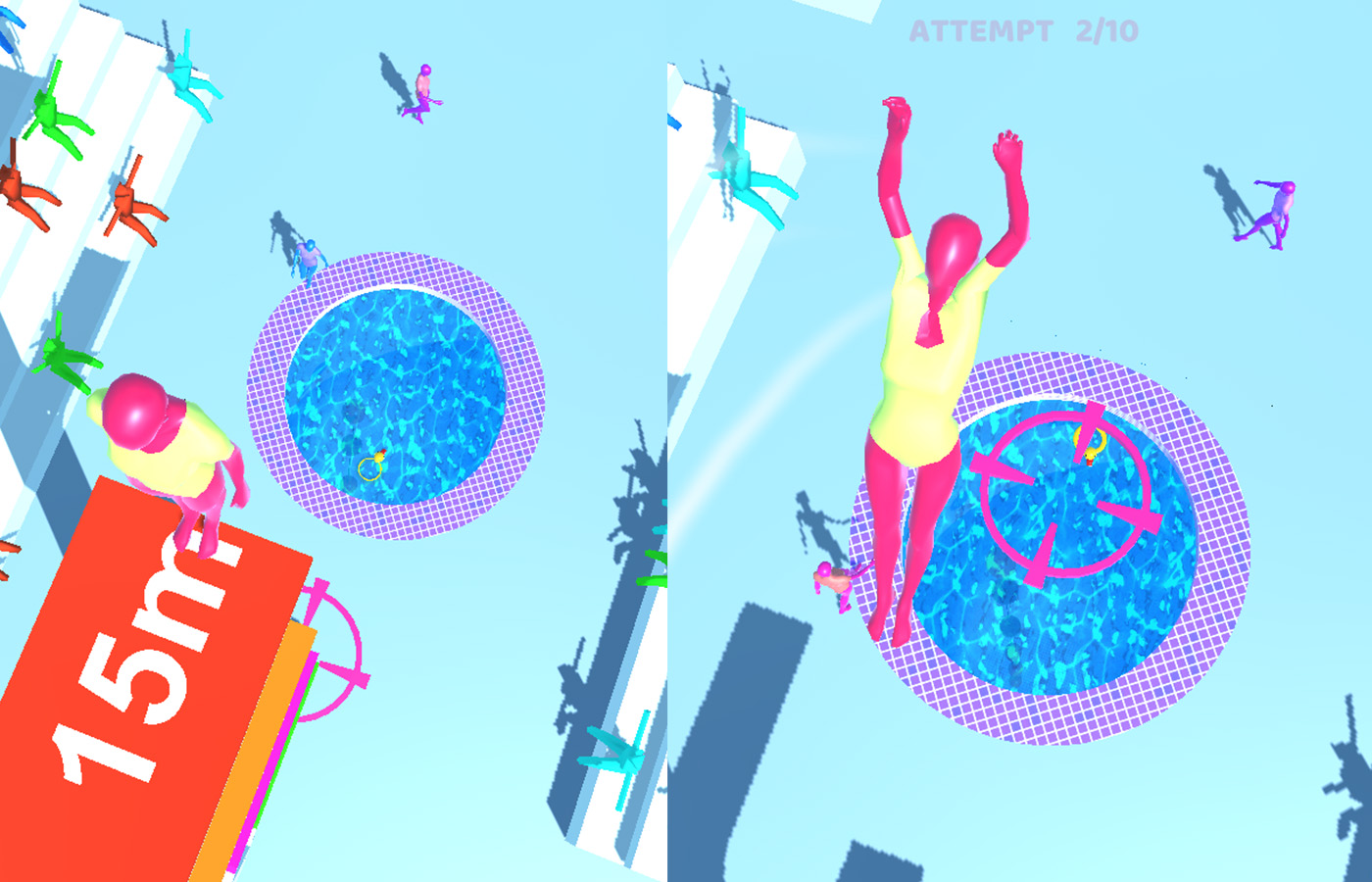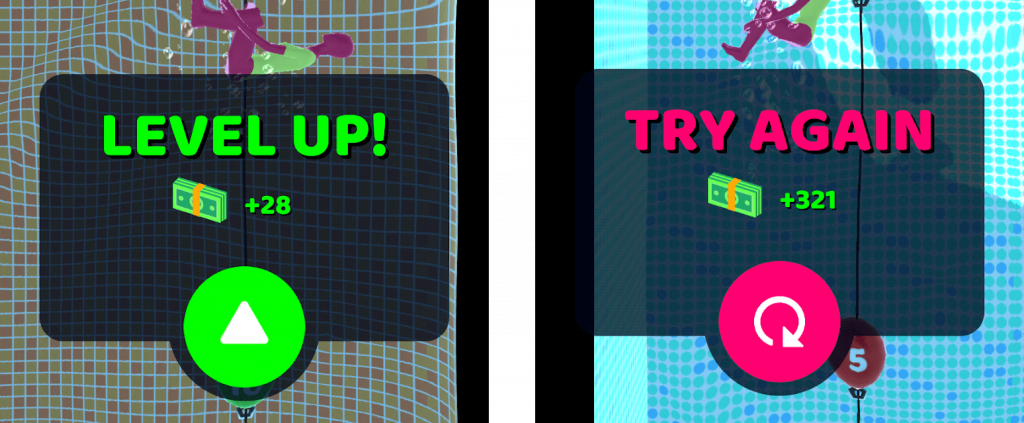How Voodoo created a hyper-casual Purple Diver game with an audience of 15 million people
What Voodoo has learned while working on Purple Diver,” says Alexander Shea, Voodoo’s publishing manager.

This year Voodoo launched Purple Diver, a mobile game about diving into the pool. It was developed together with Vyacheslav Tarasov (author of Radgoll Archer, Truck Traffic Control and Shake Loves numbers). The title quickly soared to the top of the charts, its global downloads totaled 15 million.
Alexander Shi told how the game was created and what Voodoo learned while working on it. The original post was published on GameAnalytics.

Alexander Shi
Why we love Purple Diver
For us, one of the main advantages of Purple Diver is how it is monetized. In a game like this, ads can be played often. We are aware that the abundance of advertising annoys some players. But the nature of the game, the depth of its gameplay, it seems to us, attract people and minimize irritation. The game also has inexpensive traffic.
Let’s take a look at what Purple Diver was like at different stages of development, and then discuss its final version.
Version 1.0. Inspiration and starting numbers
The first version of the game appeared somewhere in December 2018. Vyacheslav has always dreamed of making a game about jumping. He was inspired to start development after all by the success of Flip Trickster publisher Lion Studios. Obviously, our game is very different from Flip Trickster in visual terms (especially in terms of challenges). But the latter definitely influenced the creation of Purple Diver.

Positive
The first version of Purple Diver did not look much different from the current one. In general, it was more complex and it was more difficult to play it. And, to be honest, the level of difficulty in the first version was completely fine with us.
When playing the first prototype, there was a great chance of crashing into the edge of the pool. This complicated the transition to each next level. But our players quickly got their hands full: the complexity of the task only provoked them. In this, our game resembled Ball Blast. Yes, they can both upset with their complexity. But that’s the point. Such projects are very inspiring when they succeed in winning.
The metrics of the first version turned out to be promising. Retention of the 1st day — 45%; retention of the 7th — about 15%. This made it clear to us that the game is definitely worth doing further.
Minuses
We were a little worried about CPI. It ranged between $0.30 and $0.40 per installation. It’s not bad, but it could have been better.
In addition, the game had a rather complex UI. For example, at the end of the level, a menu with a pile of data popped up. It was difficult to understand it, and it was of little use. We understood that in order to attract players, we needed to simplify the rules and the reward system.
The training in the first version was also not the same as it is now. The game lacked a tutorial. Although we were satisfied with the complexity of Purple Diver, its first few levels turned out to be too strong. For example, if a player touched the red rings, he immediately died (now we have fixed this).
To summarize:
- retention of the 1st and 7th days was high and spoke in favor of the game;
- the difficulty level was perfect (except for a couple of things);
- our CPI needed improvement;
- our UI needed improvement: it was difficult to understand, and it was overloaded with information.
Version 2.0. Simplification of gameplay
We decided to simplify the second version of Purple Diver. Each chapter had to have one main task, always understandable to the user (whether it was “hit the duck” or “dive as deep as possible”).

We also made the UI clearer by removing a large table with the results of the jump. It became easier for players to focus on the main task.
And finally, we added a tutorial.
Judging by the KPI, all this, of course, benefited the game. Retention on the 1st day reached 50%, and on the 7th day – about 18%.
Alas, even in this version of the game, the CPI was still high. It turned out that we made a good game with excellent retention, but too expensive to publish.they couldn’t afford to publish it.
Then it was decided to involve more internal Voodoo teams in the work on the game. We started working with our marketing team. Thanks to this, we were able to test more creatives at the same time. This also meant that we could work more actively on the game, count on large budgets, and also use creatives that would be aimed at reducing CPI.
Version 3.0. Application of the acquired knowledge
When creating the third version, we turned to the experience gained during the development of other games. We continued to work with marketers to improve CPI. And at the same time, we were looking for ways to make the game more comfortable and rewarding. We have tested:
- a version without killer rings;
- the version where you do not need to achieve the main goal of the level to move to the next one;
- the version with collectible items and the version where it was easier for the player to reach the bottom of the pool, as well as many others.
And we didn’t like all of them. In fact, they only worsened the feeling of the game.
At this stage, we realized that it’s not worth making a difficult game (we’re talking about a project in which victory is determined by skill, not luck, and the player progresses over time) easier. This can hit retention. This situation once again reminds us: there are no simple and universal answers in game design.
Version 4.0. Bringing the game to mind
By the time the fourth version was created, our marketing team had done a great job on CPI. The indicator approached the release KPIs.
Therefore, we decided to return to our most successful version — the second one. Of course, we made a number of changes to balance the Purple Diver and lower the entry threshold, and also added vibration.
All these innovations, coupled with an improved CPI, allowed Purple Diver to become one of our top launches.

So, what have we learned?
Let’s list what we learned when creating and launching Purple Diver. These things apply to other projects as well.
- It is quite possible to achieve a good CPI for a new game with an unoriginal idea. We don’t take clone games here, even though they dominate the charts. Using and improving other people’s mechanics is not so bad: the main thing is that the game is fun.
- Sometimes you can forget about the main rule, according to which games should be very simple or rewarding. Not all projects need to be like this. Sometimes the right tutorial or skill development system is much more important for them. Especially if you want to create a good, albeit complex, game.
- Starting the game before reaching the desired KPIs is a working scheme. This, and involving more teams in the work, allows us to release games more often and faster. Maybe we won’t see huge earnings on the first day, but at least we will cover the development costs. And we will be able to pay for the work of developers before we reach the usual indicators for us. But this does not mean that we change and test the game only at a late stage. We still want to work with other teams on titles that have a retention of 40% on day 1, 10% on day 7, and a CPI below $0.50. But it also means that when we reach these metrics, we first conduct A/B testing, quickly launch the game and only then move on to the KPI.
Also on the topic: